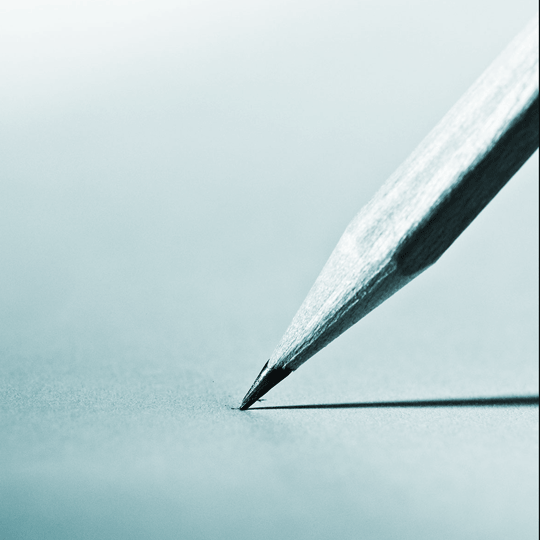Essay: On Art, Resonance and Resilience
By Christine Tannous, Boston University
“All art is autobiographical to some extent,” he digressed as we shifted our discussion from brush strokes in Gerhard Richter’s Vase to abstract patterns in Chuck Close’s Paul IV. It was a crisp, unforgivingly chilly November afternoon in 2014. As we meandered along the crowded galleries of Boston’s Museum of Fine Arts, intoxicated by the cornucopia of perennial masterpieces adorning its walls, Daniel Jay and I basked in candid meditations on contemporary art.
Jay belongs to a rare breed of artists working at the interface of art and science who are at once artists and scientists. A Tufts University researcher and lecturer on weekdays, an artist at night and on Sundays, for the past thirty years Jay has kept both worlds squarely apart. Yet in the summer of 2013, after attending an experimental painting workshop at The Fine Arts Work Center in Provincetown, Massachusetts, he found a unique voice in a series of chemical drawings he made using liquid nitrogen and chemical elements. Jay showcased Archemy, his first sci-art work and the brainchild of his Provincetown experiments, at Tufts University’s Slater Concourse Gallery in the fall of 2014. His journey from Provincetown to Archemy is the subject of Supercool Art, an essay he wrote for Impact’s 2014 winter issue.
I had intended for our dominical stroll through the MFA to be at once an icebreaker and a discreet way into the mind of the artist. As I had never met Jay prior to that November afternoon and hence neither knew the man nor the artist, I calculated that a museum visit was the shortest possible distance to a candid conversation. More pressingly, however, I had to observe the artist in his natural milieu, and slowly, gently peel the layers to peek through.
In my modest experience interviewing artists and musicians, I have noted that the more cutting-edge an artist’s work is the less likely they are to clearly articulate the-what-and-the-why of their art. Perhaps because they wrongly assume the matter is too complex for a layperson. Whatever the reason, this couldn’t be further from the truth here. A frequent leitmotiv during our lunch at the MFA was the nineteenth-century specialization and the ensuing divorce between science and the humanities. Jay’s account of the cultural dynamics behind the division is effortlessly simple yet profoundly perceptive. He bemoaned the rise of an elitist contemporary art form and the loss of thought diversity as a result of the divergence, adding that everyone can think at the interface and “the more people the better.”
As we discussed the feasibility of his vision, I shared my misgivings about a Britten documentary I had been working on for my online journalism class. I had decided to turn my final project, at first a video report on Boston University’s Symphony Orchestra and Chorus’ rendition of Benjamin Britten’s War Requiem, into a short documentary about the work itself. As a writer and former musician, I was eager to share Britten’s music with the largest audience, but an opus as fundamentally complex as the War Requiem was a rough beast to tame. The highlight of a 1962 three-week arts festival celebrating the reconstruction and dedication of Coventry Cathedral after its bombing by the Luftwaffe, The War Requiem is Britten’s unique pacifist statement and a colossal choral and orchestral work. It juxtaposes texts from the Latin Mass for the dead, delivered by a symphonic orchestra, a chorus and a soprano, with poetry from World War I poet Wilfred Owen, delivered by a chamber orchestra, a baritone and a tenor. A children’s chorus provides a timeless third dimension to the piece.
The Requiem’s anti-war message would no doubt resonate with many an audience what with the Great War centennial celebrations and continuing conflicts all over the globe. Britten’s division of choral and orchestral forces, his use of the poems as a commentary on the Mass, his unusual closing harmonies all collide to convey a pacifist message. But deconstructing without oversimplifying was indeed proving difficult. Was I to abandon this foolhardy endeavor then? I offer Jay’s response unabridged.
“When you teach you look for resonance and you know that not everyone will resonate with your message. You are looking to inform but you are also looking for that pair of eyes fixed at you like this is life-changing. This is how you build a community that will hopefully lead the next generation.”
Earlier that morning, Jay had been figure drawing with a group of friends at the Cambridge Art Association. When I asked the significance of figure drawing and why he had been doing it for thirty years, he likened it to playing Chopin’s Etudes for pianists. The whole purpose is to train your hand and your eye to work together to capture a scene, to create a universe on a page. To capture a scene and create a universe on a page, and to look for resonance — all art is autobiographical indeed.
But so is writing a novel, a memoir, an aria or a symphony. The canvases may be different yet the poetry of the language is the same, as Jay would put it.